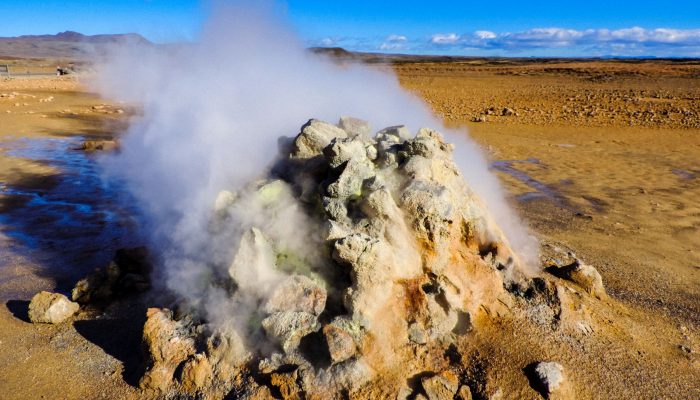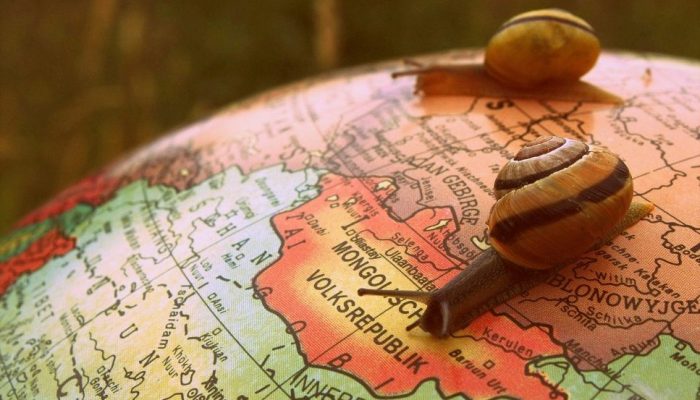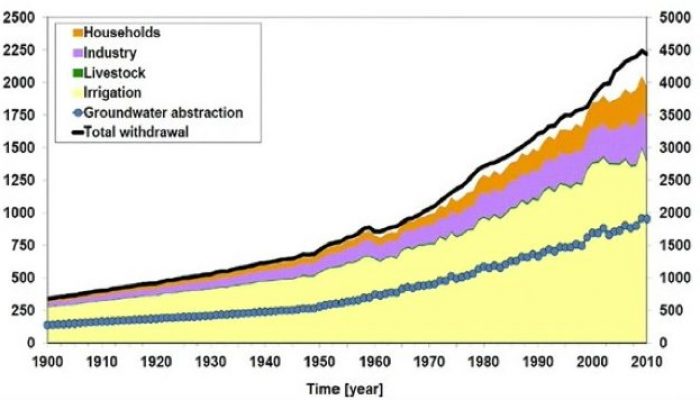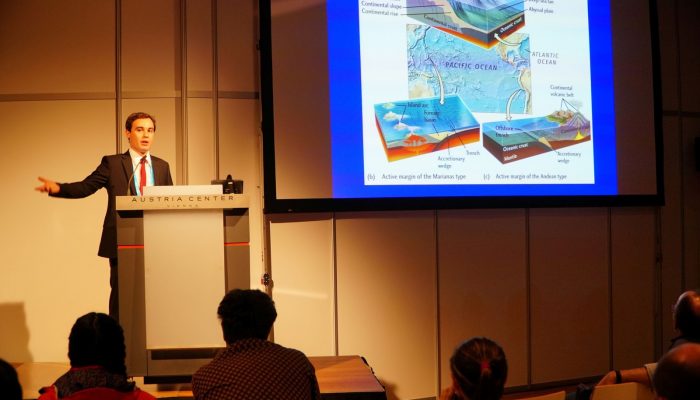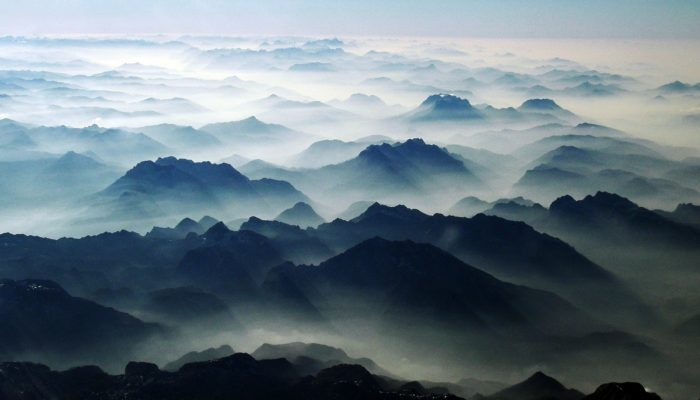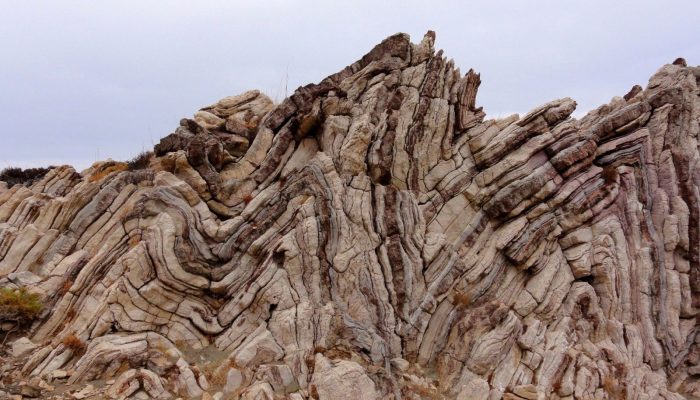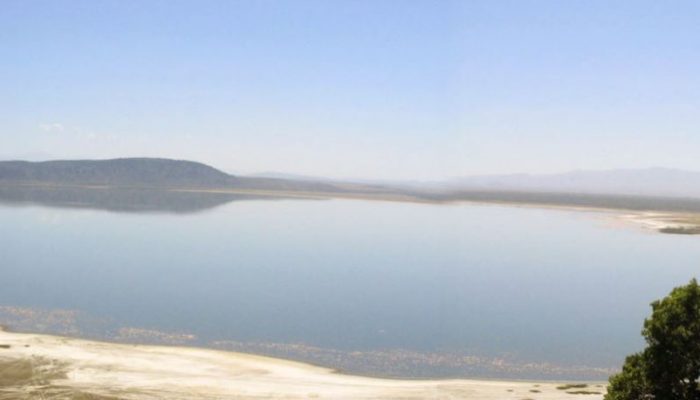Space science has always been an exciting relative of the geosciences, and so it may come as no surprise that the woman who could become Germany’s first female astronaut attended the EGU General Assembly this year. Insa Thiele-Eich has made it to the final of Germany’s ‘Die Astronautin’ competition, which intends to send a German female astronaut to the International Space Station for a ten day re ...[Read More]
Solar-Terrestrial Sciences
Welcome
Welcome to the ST division blog! The Solar-Terrestrial (ST) Division of European Geosciences Union (EGU) is starting its own blog! The blog is an initiative by a group of enthusiasts who met during the EGU’s General Assembly in April 2017. We are thrilled to set up this blog that will keep our readers informed about a range of topics relevant to the science of the division. The influence of the Su ...[Read More]
GeoLog
Imaggeo on Mondays: Breath from the underground
The heat seeping from the geothermal area which is part of the Krafla volcanic system in Iceland, ‘powers’ the steaming vent at Hverir (Hverarönd). The area is well known for its mud pots and sulphuric gas fumaroles, complete with pungent eggy smell. Some of the vents are in fact boreholes drilled in the 50’s for sulphur exploration which have been turned into fumaroles, the steam is a resul ...[Read More]
Geodynamics
Our Geodynamission
Hello and welcome to the new blog of the Geodynamics division! From now on we will break your week on Wednesday morning with a new blog post! We will showcase many different aspects of geodynamics by introducing various topics to you in our Geodynamics 101 series, and we will discuss the latest geodynamics news in our News & Views. We will also keep you up to date with the Geodynamics-related ...[Read More]
WaterUnderground
What is the difference between ‘water withdrawal’ and ‘water consumption’, and why do we need to know?
Post by Inge de Graaf, University of Freiburg, Environmental Hydrological Systems group ________________________________________________________________________________________________________________ Last week I had to teach my first class in global hydrology. When I showed the global trend on increasing demands and withdrawals (see Figure) I needed to explain the different terms as sometimes the ...[Read More]
GeoLog
GeoTalk: The life and death of an ocean – is the Atlantic Ocean on its way to closing?
Geotalk is a regular feature highlighting early career researchers and their work. Following the EGU General Assembly, we spoke to João Duarte, the winner of a 2017 Arne Richter Award for Outstanding Early Career Scientists. João is a pioneer in his field. He has innovatively combined tectonic, marine geology and analogue modelling techniques to further our understanding of subduction initiation ...[Read More]
GeoLog
Light years from home – a geologist’s tale
In a departure from the usual posts we feature on the blog, today Conor Purcell (a freelance science writer) brings you a thought provoking science fiction piece. Grab a drink and dive into this geology inspired adventure! “It’s typical geology for a rocky planet” K reported. “Captured beneath the ocean at its northern pole, the core is a mix of metamorphic and sedimentary rock, with sand an ...[Read More]
GeoLog
Imaggeo on Mondays: Airplane views of the Alps
The forward scattering of sunlight, which is caused by a large number of aerosol particles (moist haze) in Alpine valleys, gives the mountain massifs a rather plastic appearance. The hazy area in the foreground lies above the Koenigsee lake; behind it the Watzmann, Hochkalter, Loferer Steinberge and Wilder Kaiser massifs loom up behind one other to the right of the centre line. Behind them is the ...[Read More]
Tectonics and Structural Geology
Features from the field: Folding
Folding is one of the most common geologic phenomena in the world. I should start with defining the term ‘deformation’ in order to understand the folding process better. In geology, deformation is an alteration of the size or shape of rocks. Deformation is caused by stress, the scientific term for force applied to a certain area. Stresses on rocks can stem from various sources, such as ...[Read More]
WaterUnderground
How prehistoric water pit stops may have driven human evolution
Post by Matthew Robert Bennett, Bournemouth University and Mark O Cuthbert, Cardiff University Our ancient ancestors seem to have survived some pretty harsh arid spells in East Africa’s Rift Valley over five million years. Quite how they kept going has long been a mystery, given the lack of water to drink. Now, new research shows that they may have been able to survive on a small networks of sprin ...[Read More]


